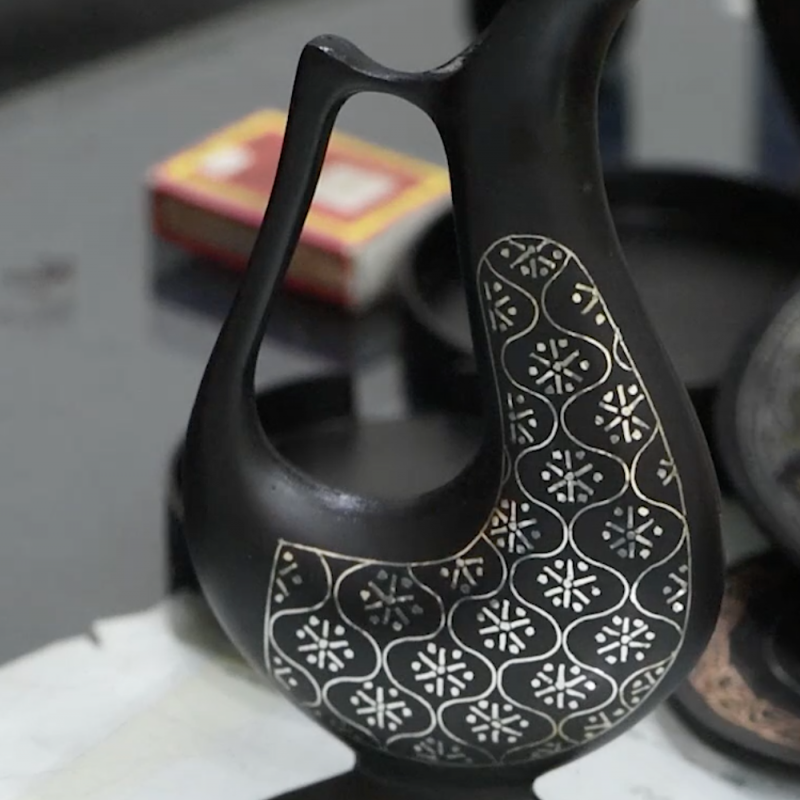Bidri is a metal inlay art that developed in Bidar, Karnataka, in the 14th century CE. It was the joint efforts of Abdul-bin-Kaiser, an artisan from Iran, and local Bidari artisans that gave birth to this art form. Bidri metalwork gained precedence in the region under the aegis of Sultan Ahmed Shah Baihmani. It is believed that the soil from the Bidar Fort, unique for its oxidising property, is used to blacken the metal. Further, silver as well as gold and brass are used for inlay work. Earlier the metal craft was practiced in Bidar, Purnea, Lucknow and Murshidabad, but today it is confined to Bidar and Hyderabad. In 2008, Bidri recieved the long-awaited Geographical Indication (GI) tag.

Monisha Dhamodaran
Monisha Dhamodaran holds a postgraduate diploma in art and design from Srishti Institute of Art, Design and Technology, Bangalore. She aligns her personal interest in Indian art practices to her research.


